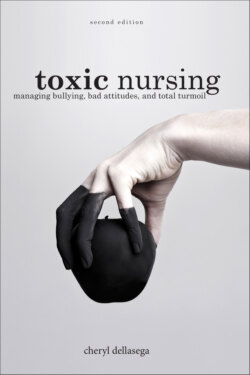Читать книгу Toxic Nursing, 2nd Ed - Cheryl Dellasega - Страница 13
На сайте Литреса книга снята с продажи.
methodology for this book
ОглавлениеPrior to the printing of the first edition of Toxic Nursing, my coauthor and I conducted a Google search using the terms “nurse bullying” and “nurse conflict and cynicism.” This resulted in 6,300,000 hits for “bullying” and 10,200,000 for “conflict.” A review of the top 100 sites for each category of the two searches revealed that blogs on bullying evoked many more responses, with only one blog specific to conflict and chaos.
To better offer an understanding of conflict management in the nursing workplace, we conducted a review of problems reported in the scholarly literature. Then, to explore nursing perspectives more intimately, we selected narratives for analysis rather than research or anecdotal articles. Specifically, we used blogs as a source of stories shared by nurses.
To identify blogs that would provide content on common nursing conflicts, we used the following criteria. First, they had to be about nurses in practice, not students. Second, there needed to be more than three posts from different posters featured on the blog. Third, the blogs had to refer to nurses or situations related to the nursing profession within the United States. Finally, they had to be written in English. Using these guidelines, we identified 21 usable blogs.
The number of posts on the 21 blogs ranged from three to 431. All were signed anonymously, using a first name or screen name. Some of the posts were in response to a query about the topic of conflict or bullying, while others were written in response to a previous post or news story.
We further reviewed the selected blogs and numbered each post consecutively. We then read each post individually and independently to analyze them for themes related to conflict, cynicism, or chaos.
Once we had reviewed all posts and grouped them in themes, we met to discuss our results, collapsing and categorizing them into larger content areas of meta-themes (categories), which became 16 chapters of the book. When there was disagreement and we could not reach consensus, we consulted a third nurse expert to provide their interpretation. This expert and a fourth nurse/administrator/reviewer then reviewed the final categories to confirm that they captured “real-life” sources of conflict in the workplace.
We then constructed narrative scenarios based on each theme (with the exception of four scenarios that were submitted to us specifically for inclusion in the book). We compared each scenario to original blog posts emerging from the specific theme for veracity. Further, we compared the scenarios with 50 written narratives shared during workshops, lectures, and email correspondence as a further confirmation of validity. Although the process we used to generate scenarios was not rigorous or categorized as research, we conducted it using a thoughtful and scholarly approach that would lead to valid conclusions. The commentary provided by the experts was lightly edited without altering the actual content.
Each chapter begins with an overview of particular areas where nurse toxicity often arises. Following that is a section titled “Clearing Toxicity: Scenarios, Insights, and Reflections.” Here you will find scenarios based on real-life accounts, with insight and advice from nurse leaders—a group of 31 experts in nursing management that were asked to respond to the narratives from the perspective of preventing, addressing, or minimizing the consequences of conflict. These experts were identified through personal contacts, literature review, and recommendations from colleagues. Experts were asked to avoid citing references and rely on their own experiences and intuitive skills to provide practical advice about the situation. Following the “Nurse Leader Insight” section are “Reflections” with prompts to help readers explore the issues presented.
At the end of each chapter is a section called “Fostering Cultural Change” that can help guide you as you explore with your staff methods to decrease toxicity and promote a healthier and more satisfying work environment. Toxic Nursing, 2nd Edition helps nurses—from bedside nurses to charge nurses to nurse managers—navigate the nuances and gray areas of toxic behavior.
